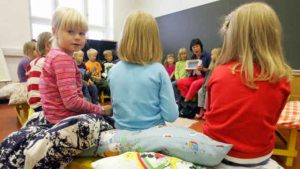Home » Commentary » Opinion » Fixated with Finland
· IDEAS@THECENTRE

 It may be a new year, but we’re still stuck with the old myth that Finland is an education utopia Australia must emulate.
It may be a new year, but we’re still stuck with the old myth that Finland is an education utopia Australia must emulate.
Pasi Sahlberg from Finland, who has joined the new Gonski Institute for Education at UNSW, argued this week that his country’s school system has a lot to teach Australia. Basically, according to Sahlberg, Finland has more student play time and less standardised testing.
It is true Finland consistently outperformed Australia on all the international standardised tests in 2016, and of course we should be willing to learn lessons from the top-performing countries.
But Finland’s international test results have declined in recent years, and — as Steven Schwartz has pointed out — there are many reasons why Finland’s school system would be difficult, if not impossible, to emulate here. For example, Finland has little cultural or racial diversity, and has a much lower immigration rate than Australia.
Finnish is also a much simpler language than English, which means learning early literacy skills is relatively easier, boosting school results in later years.
Other countries like Singapore, which is the top-performing country in literacy and numeracy — not to mention collaborative problem-solving — potentially have many lessons to offer Australia as well.
Analysing high-achieving school systems is useful, but it is a fantasy to suggest Finland is the epitome of good education. This is part of a much broader myth that the Nordic countries are socialist paradises (ignoring the fact that most socialists wouldn’t be happy with Finland’s corporate tax rate of only 20%).
In any case, is more play time and less testing the key to boosting Australia’s school results?
No evidence has been presented to suggest Australian kids don’t have enough play time at school — recess and lunch are actually quite common practices in our schools, and there isn’t exactly a dearth of sports options for students.
And blaming NAPLAN for the lack of improvement in Australian schools is like blaming the thermometer for the fact that it was 42 degrees in Sydney last Sunday. NAPLAN identifies problems; it doesn’t solve them by itself.
Finally, it’s interesting that we’re told we should be like Finland and have fewer standardised tests, on the basis that Finland’s school system performs well — which, ironically, we only know because Finland performs well on international standardised tests.
Fixated with Finland